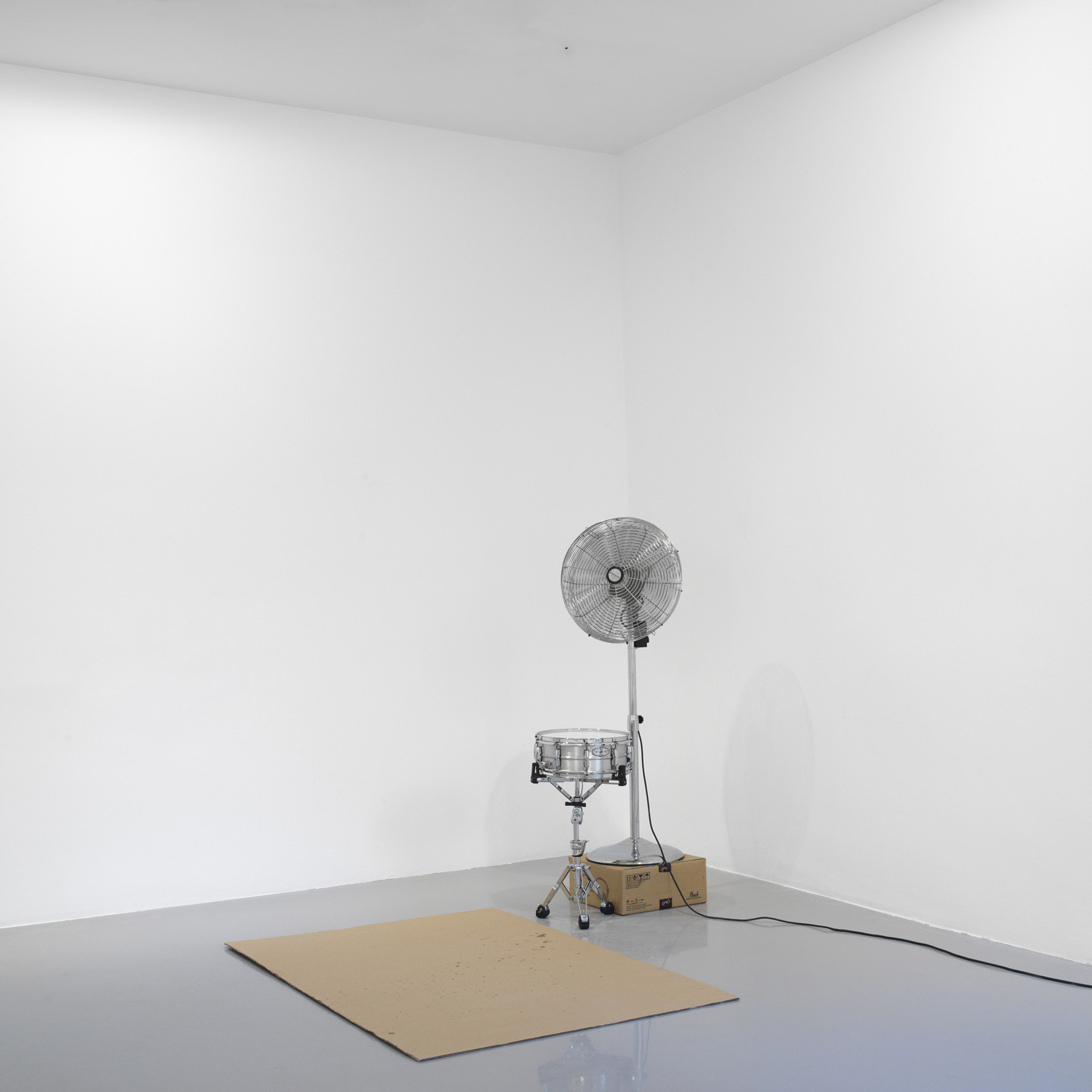Lisson Gallery is pleased to announce the second UK solo show of Mexican
artist Fernando Ortega. The exhibition will present a new body of work
articulating Ortega’s delicate experimentation in the translation of sound into
visual registers. The artist reactivates traditional performances and dormant
instruments while generating resonances between visual and sonorous
occurrences.
In the making of his work, Ortega seems to share Sol LeWitt’s conviction that
‘irrational thoughts should be followed absolutely and logically’. Ortega’s practice
sees the artist thoroughly pursue an idea that can at first appear unachievable
due to practical impediments. His works rely on fortuitous and apparently
inconsequential circumstances; ephemeral situations capable of bridging
intellectual pursuits with powerful sensorial experiences.
The photographic series N.Clavipes meets S.Erard, 2008, is a composition in six
movements. In order to realise the work, Ortega borrowed an eighteenth
century harp, which had not been played for a long time. The artist removed the
cords from the frame of the harp, turning it into a sonorous canvas, on which a
spider reactivated the old instrument by weaving its own strings. The resulting
series of photographs document the journey of the spider, moving from the
shoulder, to the harmonic curve, to the crown and the tuning pins, and finally
reaching the core of the instrument. The series beautifully connects an ancient
object and systematic approach to musical composition with an insight into how
sound operates in the natural world.
Read moreFernando Ortega’s ability to inject the everyday with poetry and humour is
articulated in Leak 2, 2008. In the installation a ceiling water leak is inexorably
drawn by gravity towards the skin of a snare drum, only to have its direction
interrupted and altered by air blowing from a fan. The drops fall to the floor,
while the ideas of an unexpressed sound and musical potential force their way
into visitors’ imagination.
With the video Resonance, 2003-08, Ortega directs his gaze to situations that
normally go unnoticed, taking as his starting point a chance encounter in the
streets of Mexico City. In 2003, Ortega filmed two men walking next to each
other, both supporting themselves with a crutch under the same arm. While
concentrating on the subject of the video, the artist was unaware that an
accident was taking place in the background. The accident, which was only
coincidentally part of the filming, is the central force in the work. The dislocated
narrative that structures the video is reinforced by the insertion of a musical
counterpart: two contrasting fragments of composition by Chopin.
Press enquiries Catherine Mason at Calum Sutton PR
catherine@suttonpr.com +44 (0)20 7183 3577
Fernando’s interest in music is more intuitive than academic, and reveals an open
refusal to adhere to any systemic regime. Meeting Point, 2008, is the
photographic documentation of an unannounced collaboration with a
performance by an orchestra. During the performance the artist pointed a laser
pen at the conductor’s score. As the red dot in the middle of the score testifies,
Ortega attempted to insert a random accidental presence into the rigid rules
which govern orchestral performances.
The Lisson show coincides with a major survey exhibition of Fernando Ortega’s
work at MUCA, Mexico City, curated by Patrick Charpenel and accompanied by
a catalogue published by Turner Publishing and featuring essays by Jens
Hoffmann and Michel Blancsubé.
Fernando Ortega was born in Mexico in 1971, where he lives and works. Ortega
has had solo exhibitions at Bonner Kunstverein, Germany; Ludwig Foundation, La
Habana, Cuba and Centro de la Imagen, México City. He has exhibited in group
exhibitions internationally including Malmö konstmuseum, Malmö; Istanbul
Modern, Turkey; Museum of Contemporary Art, Chicago; Palais de Tokyo, Paris;
and BE-PART, Platform voor actuele kunst, Waregem, Belgium. At the Venice
Biennale in 2003, Ortega’s electric fly-killer, hung up high under the ceiling, cut
the space’s power supply each time an insect was electrocuted, causing a
momentary blackout within the space. Earlier this year, at Museo de arte Carrillo
Gil in Mexico City, Ortega realised Assisted Levitation, for which a tower crane
was erected holding a bird feeder. A hummingbird attracted by the honeyed
nectar would reach it, and perch on it, before flying away. Seeking a sense of
equilibrium while undermining conventional assumptions, the works play
between the factual and the intangible.
Visitor Information
Lisson Gallery 29 Bell Street, London, NW1 5DA
Hours: Mon-Fri 10am-6pm
Admission: Free
Nearest Tube Station: Edgware Road



